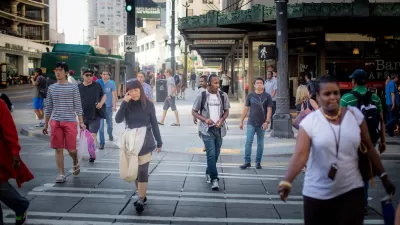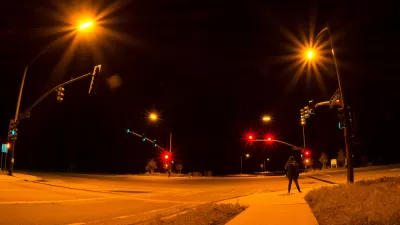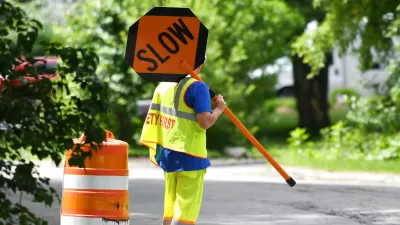Rather than looking at current pedestrian counts, the city will use a newly developed set of 'pedestrian generators' to evaluate the need for new painted crosswalks.

As Ryan Packer writes in The Urbanist, Seattle's Department of Transportation has just made a policy change that moves the city away from using pedestrian counts to justify painting new crosswalks, a move that pedestrian advocates praise as a step in shifting the focus of road design to people walking and biking.
"In the new policy, SDOT uses the concept of 'pedestrian generators,' or amenities automatically assumed to generate pedestrian traffic, to create a framework where enhanced crossings are 'consistently provided' along arterial streets where there are certain 'Tier 1' generators." Tier 1 'pedestrian generators' include trail and greenway crossings, school zones, and some transit stops. "There are also 'Tier 2' pedestrian generators, which are '[b]ased on best engineering judgement, enhanced pedestrian crossings should be considered for proactive installation' near these facilities." Second-tier generators include entrances to parks; community facilities like libraries, community centers, and hospitals; "facilities serving high volumes of vulnerable populations;" and transit stops that don't qualify under Tier 1.
Tier 1 sites will likely receive new crosswalks right away, while Tier 2 locations might need additional analysis to determine a true need.
According to the article, "SDOT’s policy memo states that this change will 'enabl[e] enhanced pedestrian crossings to be planned and constructed concurrently with transit facilities and development anticipated to generate pedestrian demand.'"
FULL STORY: SDOT Adopts Policy Change to Allow More Marked Crosswalks Without Red Tape

Planetizen Federal Action Tracker
A weekly monitor of how Trump’s orders and actions are impacting planners and planning in America.

Restaurant Patios Were a Pandemic Win — Why Were They so Hard to Keep?
Social distancing requirements and changes in travel patterns prompted cities to pilot new uses for street and sidewalk space. Then it got complicated.

Map: Where Senate Republicans Want to Sell Your Public Lands
For public land advocates, the Senate Republicans’ proposal to sell millions of acres of public land in the West is “the biggest fight of their careers.”

Maui's Vacation Rental Debate Turns Ugly
Verbal attacks, misinformation campaigns and fistfights plague a high-stakes debate to convert thousands of vacation rentals into long-term housing.

San Francisco Suspends Traffic Calming Amidst Record Deaths
Citing “a challenging fiscal landscape,” the city will cease the program on the heels of 42 traffic deaths, including 24 pedestrians.

California Homeless Arrests, Citations Spike After Ruling
An investigation reveals that anti-homeless actions increased up to 500% after Grants Pass v. Johnson — even in cities claiming no policy change.
Urban Design for Planners 1: Software Tools
This six-course series explores essential urban design concepts using open source software and equips planners with the tools they need to participate fully in the urban design process.
Planning for Universal Design
Learn the tools for implementing Universal Design in planning regulations.
Heyer Gruel & Associates PA
JM Goldson LLC
Custer County Colorado
City of Camden Redevelopment Agency
City of Astoria
Transportation Research & Education Center (TREC) at Portland State University
Camden Redevelopment Agency
City of Claremont
Municipality of Princeton (NJ)




























